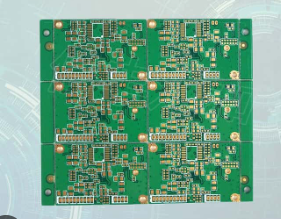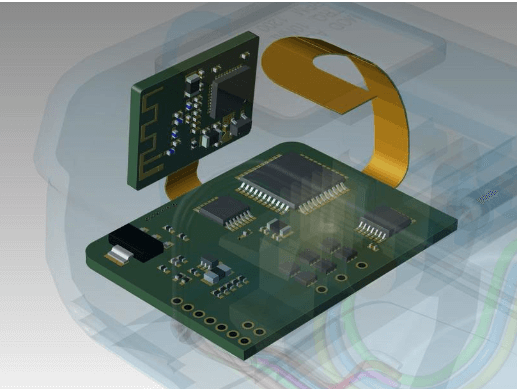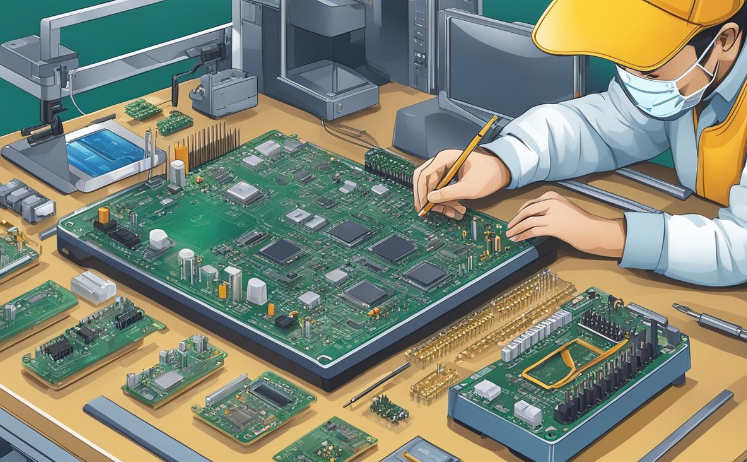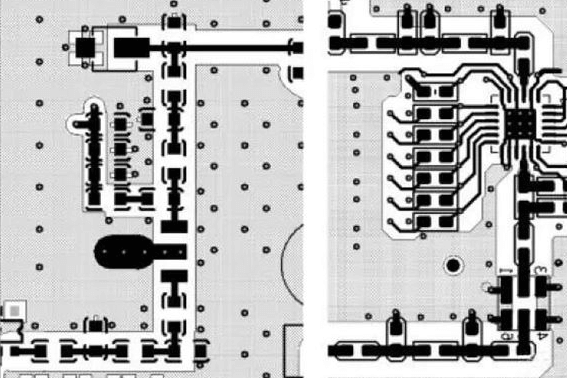Dryer pcb assembly board
Importance Of Quality Control In Dryer PCB Assembly Board
The importance of quality control in the assembly of dryer PCB (Printed Circuit Board) cannot be overstated. As the central nervous system of modern dryers, the PCB assembly board is responsible for managing and coordinating the various functions and operations of the appliance. Ensuring the reliability and efficiency of these boards is paramount, as any malfunction can lead to significant inconveniences for users and potentially costly repairs. Therefore, implementing rigorous quality control measures during the assembly process is essential to guarantee the performance and longevity of the dryer.
To begin with, quality control in dryer PCB assembly involves meticulous inspection and testing at various stages of production.
This starts with the selection of high-quality raw materials and components. Each component, from resistors and capacitors to microcontrollers and connectors, must meet stringent specifications to ensure they can withstand the operational stresses and environmental conditions typical of dryer usage. By sourcing components from reputable suppliers and conducting thorough incoming inspections, manufacturers can significantly reduce the risk of defects and failures in the final product.
Furthermore, the assembly process itself must adhere to precise standards and protocols.
Automated equipment, such as pick-and-place machines and reflow ovens, are commonly used to place and solder components onto the PCB. These machines must be regularly calibrated and maintained to ensure accuracy and consistency. Additionally, human oversight is crucial; skilled technicians should perform visual inspections and manual soldering where necessary to address any issues that automated systems might miss. This combination of automation and human expertise helps to maintain high assembly quality.
In addition to the assembly process, functional testing is a critical aspect of quality control.
Each assembled PCB must undergo a series of tests to verify its performance and reliability. These tests can include electrical testing, where the board’s circuits are checked for continuity and proper operation, as well as environmental testing, where the board is subjected to conditions such as high temperatures and humidity to simulate real-world usage. By identifying and addressing potential issues during testing, manufacturers can prevent defective boards from reaching the market.
Moreover, quality control extends beyond the production line.
Manufacturers must also implement robust traceability systems to track each PCB from assembly to final product. This involves recording detailed information about each board, including the batch of components used, the assembly date, and the results of all tests performed. In the event of a defect or failure, this traceability allows for quick identification of the root cause and facilitates targeted recalls or repairs, thereby minimizing the impact on consumers and maintaining brand reputation.
Another important aspect of quality control is continuous improvement.
Manufacturers should regularly review and analyze data from the assembly and testing processes to identify trends and areas for improvement. By implementing feedback loops and encouraging a culture of quality, companies can continually refine their processes and enhance the reliability of their products. This proactive approach not only helps to prevent defects but also drives innovation and efficiency in the manufacturing process.
In conclusion, the importance of quality control in dryer PCB assembly cannot be emphasized enough. From the selection of components to the final testing and traceability, each step in the process plays a crucial role in ensuring the reliability and performance of the dryer. By adhering to stringent quality control measures and fostering a culture of continuous improvement, manufacturers can deliver high-quality products that meet the expectations of consumers and stand the test of time.

Common Issues And Solutions In Dryer PCB Assembly Board
The dryer PCB assembly board is a critical component in modern dryers, responsible for controlling various functions such as temperature regulation, cycle timing, and safety mechanisms. However, like any electronic component, it is susceptible to a range of issues that can affect the overall performance of the appliance. Understanding these common issues and their solutions is essential for maintaining the efficiency and longevity of your dryer.
One prevalent issue with dryer PCB assembly boards is overheating.
Overheating can occur due to various reasons, including poor ventilation, excessive lint buildup, or a malfunctioning thermostat. When the PCB board overheats, it can lead to component failure or even a complete shutdown of the dryer. To address this problem, it is crucial to ensure that the dryer is placed in a well-ventilated area and that the lint filter is cleaned regularly. Additionally, checking and replacing a faulty thermostat can prevent overheating and protect the PCB board from damage.
Another common problem is electrical surges, which can cause significant damage to the PCB assembly board.
Electrical surges can result from lightning strikes, power outages, or faulty wiring within the home. These surges can fry the delicate components on the PCB board, rendering the dryer inoperative. To mitigate this risk, it is advisable to use a surge protector specifically designed for large appliances. This simple yet effective solution can safeguard the PCB board from unexpected electrical spikes.
Moisture exposure is another issue that can compromise the functionality of the dryer PCB assembly board.
Moisture can infiltrate the board through various means, such as a leaky dryer vent or high humidity levels in the laundry room. When moisture comes into contact with the electronic components, it can cause short circuits and corrosion, leading to malfunction. To prevent moisture-related problems, it is essential to ensure that the dryer vent is properly sealed and that the laundry area is kept dry. Using a dehumidifier in particularly humid environments can also help protect the PCB board from moisture damage.
In addition to these issues, physical damage to the PCB assembly board is a concern that should not be overlooked. Physical damage can occur during transportation, installation, or even routine maintenance. Dropping the dryer or mishandling the PCB board can result in broken connections or damaged components. To avoid physical damage, it is important to handle the dryer and its components with care. If the PCB board needs to be replaced or repaired, it is recommended to seek professional assistance to ensure that the job is done correctly.
Lastly, software glitches can also affect the performance of the dryer PCB assembly board.
These glitches can manifest as erratic behavior, such as incorrect cycle times or unresponsive controls. Software issues can often be resolved by resetting the dryer or updating its firmware. Consulting the user manual or contacting the manufacturer for specific instructions can provide guidance on how to perform these tasks.
In conclusion, while the dryer PCB assembly board is a vital component that ensures the smooth operation of the appliance, it is not immune to issues. Overheating, electrical surges, moisture exposure, physical damage, and software glitches are common problems that can affect the board’s performance. By taking preventive measures and addressing these issues promptly, you can extend the lifespan of your dryer and maintain its efficiency. Regular maintenance and proper handling are key to ensuring that the PCB assembly board continues to function optimally.

Innovations In Dryer PCB Assembly Board Technology
The evolution of dryer PCB assembly board technology has been marked by significant advancements that have revolutionized the efficiency, functionality, and reliability of modern dryers. Printed Circuit Boards (PCBs) serve as the backbone of electronic control systems in dryers, orchestrating a myriad of functions from temperature regulation to cycle selection. As consumer demand for more sophisticated and energy-efficient appliances grows, manufacturers have been compelled to innovate and refine the technology embedded within these essential components.
One of the most notable innovations in dryer PCB assembly board technology is the integration of microcontrollers.
These compact, powerful processors enable more precise control over the various functions of the dryer, such as monitoring moisture levels, adjusting drying times, and optimizing energy consumption. By leveraging advanced algorithms, microcontrollers can make real-time adjustments that enhance the overall performance and efficiency of the appliance. This not only results in better drying outcomes but also contributes to significant energy savings, aligning with the global push towards more sustainable living.
In addition to microcontrollers, the incorporation of surface-mount technology (SMT) has been a game-changer in the realm of PCB assembly for dryers.
SMT allows for the placement of smaller, more efficient components directly onto the surface of the PCB, as opposed to the traditional through-hole mounting methods. This advancement has led to the production of more compact and lightweight boards, which in turn has enabled the design of sleeker and more space-efficient dryer models. Furthermore, SMT enhances the reliability of the connections between components, reducing the likelihood of mechanical failures and extending the lifespan of the appliance.
Another significant development in dryer PCB assembly board technology is the use of advanced materials and coatings.
These innovations have improved the durability and resilience of PCBs, making them more resistant to the harsh conditions often encountered in dryer environments, such as high temperatures and humidity. For instance, the application of conformal coatings provides a protective layer that shields the PCB from moisture, dust, and other contaminants, thereby preventing corrosion and electrical failures. This ensures that the dryer operates smoothly and consistently over an extended period.
Moreover, the advent of smart technology has further propelled the capabilities of dryer PCB assembly boards.
Modern dryers are increasingly being equipped with Wi-Fi connectivity and IoT (Internet of Things) integration, allowing users to control and monitor their appliances remotely via smartphones or other smart devices. This connectivity is facilitated by sophisticated PCBs that can handle complex communication protocols and data processing tasks. As a result, users can receive real-time notifications, troubleshoot issues, and even download software updates to enhance the functionality of their dryers.
In parallel with these technological advancements, the manufacturing processes for dryer PCB assembly boards have also seen significant improvements. Automation and precision engineering have streamlined production, resulting in higher quality and more consistent PCBs. Automated optical inspection (AOI) systems, for example, are now commonly used to detect defects and ensure that each board meets stringent quality standards. This level of precision not only enhances the performance of the final product but also reduces the likelihood of costly recalls and repairs.
In conclusion, the innovations in dryer PCB assembly board technology have been instrumental in advancing the capabilities and reliability of modern dryers. From the integration of microcontrollers and surface-mount technology to the use of advanced materials and smart connectivity, these developments have collectively contributed to more efficient, durable, and user-friendly appliances. As technology continues to evolve, it is anticipated that further enhancements in PCB assembly will continue to drive the next generation of dryer innovations, ultimately benefiting both manufacturers and consumers alike.
Step-By-Step Guide To Assembling A Dryer PCB Board
Assembling a dryer PCB (Printed Circuit Board) is a meticulous process that requires precision, attention to detail, and a thorough understanding of electronic components. This step-by-step guide aims to provide a comprehensive overview of the assembly process, ensuring that each stage is clearly explained and easy to follow.
To begin with, it is essential to gather all necessary tools and materials.
These typically include the PCB itself, various electronic components such as resistors, capacitors, and microcontrollers, soldering equipment, and safety gear. Ensuring that you have a clean, well-lit workspace is also crucial, as this will help prevent errors and facilitate a smoother assembly process.
The first step in assembling a dryer PCB board is to carefully inspect the PCB for any manufacturing defects.
This involves checking for any visible damage, such as cracks or scratches, and ensuring that all the pads and traces are intact. Once the PCB has been thoroughly inspected, the next step is to organize the components. This can be done by laying them out in the order they will be soldered onto the board, which helps streamline the assembly process and reduces the risk of mistakes.
Following the organization of components, the next stage is to begin the soldering process.
It is advisable to start with the smallest and most delicate components, such as resistors and capacitors, before moving on to larger components like microcontrollers and connectors. When soldering, it is important to use the correct temperature and amount of solder to ensure a strong, reliable connection. Additionally, using a flux pen can help improve the quality of the solder joints by cleaning the surfaces and reducing oxidation.
As each component is soldered onto the PCB, it is crucial to double-check its placement and orientation.
Incorrectly placed components can lead to malfunctioning circuits and potentially damage the dryer. To aid in this process, referring to the PCB layout diagram and the component datasheets can be extremely helpful. Once all the components have been soldered, it is important to inspect the board for any solder bridges or cold joints, which can cause short circuits or unreliable connections.
After the soldering process is complete, the next step is to clean the PCB.
This involves removing any residual flux and solder splashes using a suitable cleaning solution, such as isopropyl alcohol. Cleaning the board not only improves its appearance but also helps prevent potential issues caused by leftover flux residues, which can be corrosive over time.
The final stage in assembling a dryer PCB board is to perform a series of tests to ensure that the board functions correctly.
This typically involves using a multimeter to check for continuity and verify that there are no short circuits. Additionally, powering up the board and running functional tests can help identify any issues that may have been missed during the assembly process. If any problems are detected, it may be necessary to rework certain areas of the board, such as re-soldering components or replacing faulty parts.
In conclusion, assembling a dryer PCB board is a detailed and methodical process that requires careful planning and execution. By following this step-by-step guide, you can ensure that each stage of the assembly is carried out correctly, resulting in a high-quality, reliable PCB that will perform effectively in its intended application.





